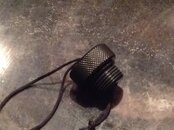Here's what's wrong with the Delrin plugs. If they get pressurized they become projectiles.View attachment 588614
And, yes, it frickin' *hurt*.
Scheiß, break out the Bactine! My delrin plugs have a fine vent, where a knotted cord is attached --couldn't be a projectile, in any case; air passes through it, like s**t through a goose . . .
So why use them at all? Why not just leave the DIN valve open?
I have found them notorious for accumulating moisture, especially at the back of the valve -- far more than dust; and the cheap vented plugs easily solve that problem, while riding in the bed of my truck, in the rain; rinsing of tanks, etc . . .




